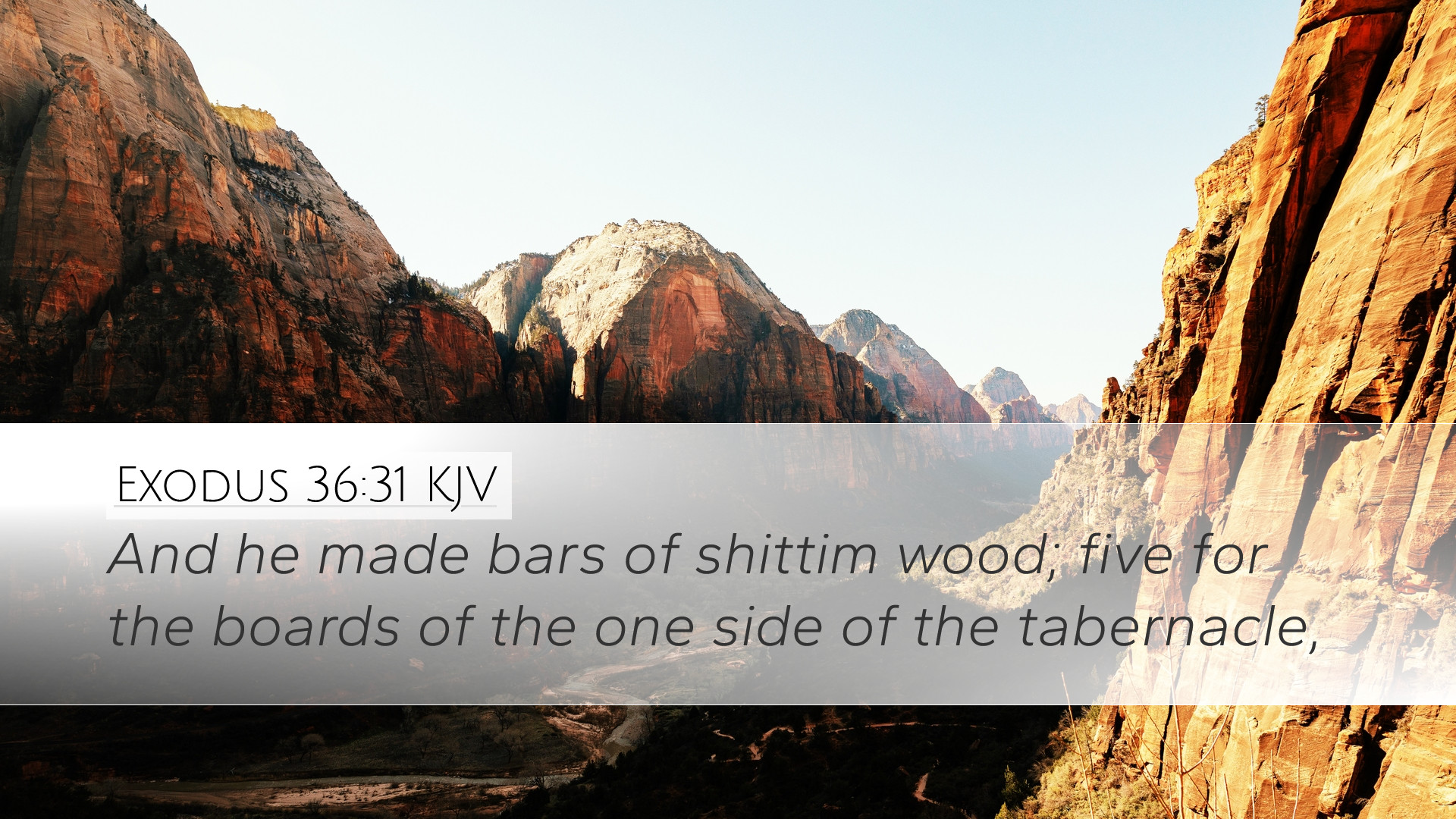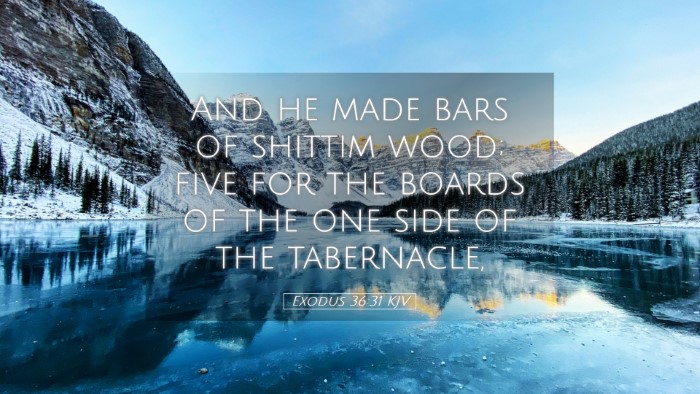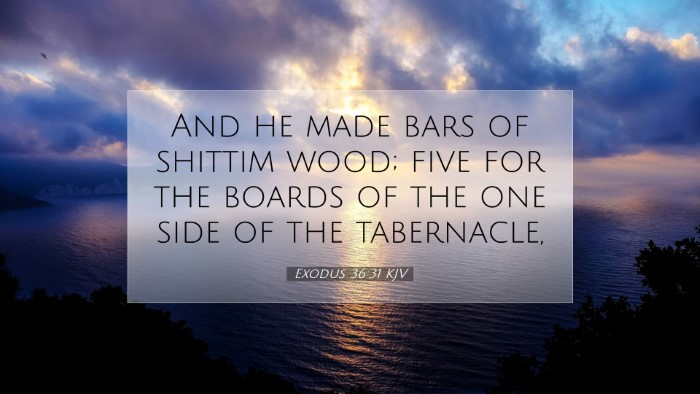Commentary on Exodus 36:31
Verse: Exodus 36:31 - "And he made the staves of shittim wood, and overlaid them with gold." (KJV)
Introduction
This verse occurs in the context of the construction of the Tabernacle, a significant element in the worship of the Israelites. It highlights not only the materials used but also the symbolism behind these elements. Public domain commentaries such as those from Matthew Henry, Albert Barnes, and Adam Clarke offer profound insights into the implications and theological significances of this text.
Historical Context
The Tabernacle served as a portable dwelling place for God among His people during their journey through the wilderness. Each material used in the Tabernacle had profound meanings that contributed to a greater understanding of God’s holiness and relationship with Israel.
Significance of the Materials
-
Shittim Wood:
This type of wood, also known as acacia wood, symbolizes durability and resilience. It is resistant to decay and pests, akin to the eternal nature of God's covenant with His people.
-
Gold Overlay:
The gold represents purity and divinity. Its use on the staves denotes that the physical structure used to carry the divine presence is adorned and set apart for holiness.
The Craftsmanship Involved
Matthew Henry emphasizes the skillful handiwork of the craftsmen, particularly Bezalel and Oholiab, called by God to execute the design entrusted to them. Their workmanship signifies that engaging in sacred tasks requires not only dedication but also skill, as these attributes reflect the Creator Himself.
Theological Implications
Albert Barnes notes that gold often signifies the glory of God. Consequently, the use of gold in the Tabernacle's furnishings, including the staves, points to the majesty and splendor of divine presence. It is a tangible reminder that God is sovereign and worthy of the best offerings from His people.
Symbolism of the Staves
The staves are crucial for carrying the Ark of the Covenant, which represents God’s covenant with Israel. Adam Clarke points out that these staves symbolize the ongoing presence and guidance of God with His people, indicating that He travels with them through life's journey.
Application for Today
For pastors, students, and theologians, this verse encourages a deeper understanding of the sacredness of worship and the need to prepare our hearts and environments for God’s presence. The values of careful preparation and intentionality demonstrated in the construction of the Tabernacle can be applied to modern worship practices.
Lessons in Leadership and Community Engagement
-
Attention to Detail:
Just as the Israelites were meticulous in following God's directions, we too should pay attention to the details of our worship practices and community engagement, ensuring they honor God.
-
Commitment to Excellence:
The craftsmanship reflects a commitment to excellence that is reflective of God's character. We are called to manifest this excellence in our ministries and everyday lives.
Conclusion
Exodus 36:31 is more than just a record of the physical construction of the Tabernacle; it reveals profound truths about the nature of God, the importance of worship, and the engagement of His people in sacred activities. Through understanding these lessons, we can better appreciate the richness of Scripture and the depths of our relationship with God.


